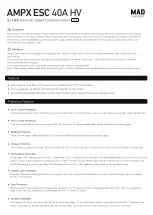
18
8024592/2019-08| SICK
O P E R A T I N G I N S T R U C T I O N S | NAV210
Subject to change without notice
3
PRODUCT DESCRIPTION
3.4.1
Impact of objects on the measurement
Most surfaces produce a diffuse reflection of the laser beam in all directions. The structure
and color of the surface determine how well the laser beam is reflected. Bright surfaces
reflect the laser beam better than dark surfaces and can be detected by the NAV210 over
greater distances. Brilliant white plaster reflects approx. 100 % of the light, while black
foam rubber reflects approx. 2.4 %. On very rough surfaces, part of the energy is lost due
to shadowing. The sensing range of the NAV210 is therefore reduced.
Fig. 5: Diffuse reflection of objects
The angle of reflection corresponds to the angle of incidence. If the laser beam hits a
surface at right angles, the energy is optimally reflected (left). If the laser beam hits a
surface at an oblique angle, energy, and range are lost accordingly (right).
















































